10 means of transport that we will use in 10 years
The automobile era ends sooner than you think
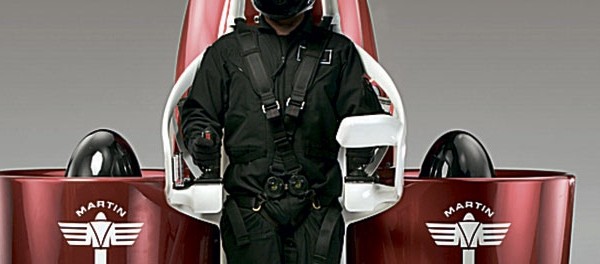 Aero backpack
Aero backpack
Every new means of transport is an embodiment of a dream about flight, speed, and comfort. We live in an era where dreams can come true in an instant if the technical conditions for their implementation are just right. For many future methods of getting from here to there, these technical conditions have already been achieved.
The space plane
The era of suborbital tourist flights is already dawning. For all practical purposes, this will be something like a spacewalk with a flight attendant, with an added feeling of independence, a view over the Earth through a round porthole, and huge over-bookings. All this, however, will take place without passengers achieving orbit.
Suborbital spaceplanes will soon start regular flights from a carrier rocket, which will accelerate the vehicle to a speed of up to 4,000 kph (2,400 mph). At the halfway mark in its upward journey, the rocket will cut its thrust and the craft begin to drift while the vehicle loses its built-up momentum and slows in its approach to apogee. At around 100-200 km above the Earth’s surface, well above the Karman Line (the boundary between the earth’s atmosphere and outer space), the spaceplane will achieve this highest point in its flight, and then follow a ballistic curve downward. At this point, those on board will experience real zero-gravity conditions, but for no longer than 5 minutes. When the space plane returns to the troposphere (the last 20,000 kilometers or 65,000 feet of altitude), the vehicle will start to behave again like a regular airplane and come down to a normal landing on a normal runway.
The first suborbital flight was actually carried out by an experimental American rocket plane called the X-15 back in 1959. The craft was operated solely by the US Air Force and by NASA, the only two American organizations authorized to test such vehicles. Today, several private companies have joined bigger government-sponsored players, and are engaged in constructing and operating their own suborbital planes. Russia, through its Federal Space Agency “Roskosmos”, has declared itself among the countries that will try to keep up with this new space race, and currently Russian scientists are working on the construction of a suborbital space transport system that is based on the Myasishchev M-55 Geophysica (NATO reporting name: Mystic-B) high-altitude reconnaissance plane.
Speed
The maximum speed for the current round of suborbital plane is around 4,000 kph (2,400 mph). However, considering the fact that spaceplanes are designed mainly for tourism, this sort of speed is not expected to be employed in practical flights (and certainly not for very long) covering long distances, such as, say, between Russia and the United States.
Capacity
Depending on the model of space-plane, the craft can hold from 4 to 14 people.
When to expect
Flights with passengers are expected to start within 2-3 years.
Wheels, gyroscope and nothing excessive
“This is something between slippers and a bicycle,” Dean Kamen said when describing his invention, the electric scooter known as the Segway.
Segways first appeared in stores in 2002, and they were an immediate hit. Today, this ecology-friendly and comfortable means of transportation can be found in use by the general public, as well as by various public services. For instance, a large number of postmen in America are using Segways to deliver parcels and letters, while in German cities, this scooter can be found carrying police officers.
Recently, inventor Shane Chen released his improvement on the Segway design, creating a similar but more compact personal transport called the Solowheel. This vehicle was first released on the Chinese market, followed by Korea and then the United States. In principle, Solowheel functions as a cross between an electric scooter and a unicycle, and reviewers have suggested it takes 15-20 minutes at best, and much more at worst, to get the hang of riding it. It sets into motion without pushing any buttons and operates mainly by body movement made by the user. Gyroscopes and sensors cause the vehicle to move such that if you bend forward, the scooter will move forward. If you bend a little to the side, it will turn. Although one reviewer claimed it wore out his abdominal muscles, the scooter has the distinct advantage that it can be carried just about anywhere when not riding it.
Speed
About 20 kph (12 mph or 3.33 m/s, somewhat faster than the average sustained human running speed of 12 kph).
Capacity
Both Segway and Solowheel are designed to be used by one person. There’s little likelihood that two people will be able to balance on them, unless you are couple of well-synchronized swimmers of course.
When to expect
Already, numerous pedestrians all over the world have started to shift to these electric scooters. Regulations in many Western countries have more or less caught up with the advance, successfully implementing licensing requirements for safe use. Of course, as the price goes down, the popularity will go up.
A genuine SUV (sport utility vehicle)
The dynamic air-cushion hybrid vessel, a direct descendant of the ground effect vehicle (GEV), has emerged as a popular transport that is developing rapidly toward its release on the world markets. This aerodynamic craft outperforms its predecessor by surmounting the key limitation suffered by the GEV, the inability to climb anything steeper than a shallow slope. Recent designs promise the ability to overcome even the most impassible routes.
The idea of air-cushioning extends back to the 18th century, but development became practical only in the first half of the 20th century. In 1915, Austro-Hungarian engineer Dagobert Muller devised a torpedo boat capable of higher speeds because part of its surface area was suspended above the water by a cushion of air. Soviet scientist Konstantin Tsiolkovsky published a study on this phenomenon in 1927 that was exploited four years later by Finnish engineer Toivo Kaario, who used a flexible envelope to hold in his high-pressure air cushion. Soviet engineer Vladimir Levkov made use of both Kaario and Muller’s field work and Tsiolkovsky’s theoretical conclusions to produce the first Russian GEV in 1937.
In the latter half of the 20th century, air cushioned machines were developed as practical means of transport by China and Korea, as huge platforms capable of carrying large amounts of goods and people started to emerge from the drawing board. The goal was to increase the speed of travel between different countries in Asia isolated by stretches of sea. The work continues to date, as a final system that uses such a transport option hasn’t been settled. However, air-cushioned vehicles are already used widely in Asian coastal tourism.
Following in Levkov’s shoes, the Russian Federation has quite recently endeavored to advance to the forefront of development of air-cushioned vehicles, taking the designs for various “ekranoplan” GEVs developed by the Soviet Central Hydrofoil Design Bureau in the years before the breakup of the Soviet Union and modernizing them. However, most of this development has been kept under wraps.
It’s easy to speculate that Russia’s futuristic air-cushioned SUV might yet be under some sort of secret development. Indeed, applications for military development of GEVs certainly exist as a potential solution to ongoing logistics problems created by the Russian occupation of Crimea. Hopefully one day Russian passengers will get the chance to use a more peaceful civilian version of this cross-country means of amphibious transport to move rapidly between European Russia and parts of Siberia and the Far East.
Speed
Air-cushioned craft can travel at speeds up to half that of a passenger airline, or roughly 400-450 kph (240-270 mph).
Capacity
The biggest pasenger craft that operates today is designed for 50 people.
When to expect
China currently dominates the market for air-cushioned craft in Asia and the Arab countries (such as the United Arab Emirates).
Asia and The Arabic Emirates are the countries where the aerodynamic craft are exported from China. China typically exports to countries like the UAE surface-effect vehicles that look a lot like airplanes, but which hover not far above the calm coastal waters of the Persian/Arabian Gulf.
Levitating trains
A magnetic levitation or Maglev train is today the fastest means of ground transport. However, it would be more precise to call it an above-ground transportation because the train doesn’t touch the ground. Rather, it flies a few millimeters above a monorail.
The first designs for the use of magnet-levitated vehicles were issued in the first decade of the 20th century in Europe and North America. Nazi Germany even issued patents to Hermann Kemper, whose work eventually saw the light of day in the Bundesrepublik’s Transrapid project. In England, Eric Laithwaite, known in his country as the “Father of the Maglev”, began developing this form of mass transit shortly after Kemper. Both emerged with close to the same versions of Maglevs in the 1980s.
Laithwaite’s system was first deployed in Birmingham in 1984, but his train operated only for a decade before it was deemed unreliable. Kemper’s design, however, was exported to China by Germany’s Transrapid, which has made what is so-far more successful use of the technology for mass transportation in Shanghai, operating a regular service Maglev train that connects the city with its airport (travel time covering the 30 kilometer route is about 7-1/2 minutes).
Still, the Maglev as a long-distance transportation option remains eludes the present. Although it is ecologically sound, super-fast, cheap to maintain (fewer moving parts), and relatively safe (the 2006 Lathen train collision notwithstanding), building the infrastructure is extremely costly. Still, Japan and South Korea are developing Maglev lines, and Russia, with its great distances, is likewise considering the feasibility of connecting Moscow with the Far East. If a Maglev line were constructed between Moscow and Vladivostok, the currently seven-day trip could be reduced to little more than a single day.
Speed
In 2005, a year after development of the Shanghai Maglev train, Japan opened its Aichi High Speed Transit Tobu Kyuryo Line, or Linimo, which was created for Expo 2005. This train regularly hits about 300 kph (190 mph). However, during the 40 year development of the technology that went into the Linimo, the Japanese pursued extensive testing, which included pushing an unmanned Maglev at a test track in Miyazaki prefecture in 1979 to a speed of 517 kph (321 mph). It broke apart at that speed. In Yamanashi prefecture, meanwhile, plans are underway to again push a Maglev to around 500 kph.
Still, for regular service, the Linimo has had an enviable safety record despite various problems (including high winds that frequently shut down the high-speed line).
Capacity
Hundreds of people can fit into a Maglev train. It’s a train after all, which means that the number of passengers can vary according to the number of carriages.
When to expect
The longest track currently planned for construction extends from Tokyo to Nagoya and Osaka. The route has been narrowed to three options (all of which will cost over 5 trillion JPY, or 40 billion USD to complete), but at the most optimistic schedule, train service won’t begun until the year 2027.
Drivers are an anachronism
A notion gaining considerable popularity is the idea of a road transportation system that uses cars for individual transport, but which operate without a driver at the steering wheel. A future road transportation system would move cars with the help of optical and vibration analysis sensors, “smart roads”, radiolocation, and the ever-important artificial intelligence. Considering that 90 percent of all road accidents today, according to The Economist magazine, are the result of human error, driverless vehicles are naturally a logical step. Many people who are in car accidents visit earlandearl.com/car-accident-lawyer.html to find the best lawyer to help them. On-board computers are gaining increasing autonomy from their human controllers on airplanes, ships, and even automobiles. Self-parking systems, cruise control, and collision avoidance systems are already routine features on just about any fine car. Tesla, General Motors, and other automobile production giants are actively getting involved in the development of even more gadgets that remove human error from the equation.
Google, however, has become the unbeatable leader in developing this technology. Developers at GoogleX laboratories have been sending an unmanned Toyota Prius onto California roads to test the vehicles ability to operate in real-world conditions. These tests will be used as input for a planned Google driver-less automobile, to be released sometime soon. It has invested 250 million USD in the creation of its Uber transportation service, an alternative to taxis, which it intends to equip, ultimately, with driver-free vehicles.
Speed
Autopilot will maintain the safest but most efficient speeds for the existing road conditions.
Capacity
Any that a present-day automobile can hold.
When to expect
Fully autonomous vehicles are expected to begin taking over the roads in Western countries around the year 2020.
Reactive power on your shoulders
“We were promised jetpacks!” seems to be the rallying cry of Western nerds these days. There is even a rock band from Scotland that has taken that name, partly as an ongoing expression of disappointment.
Certainly the idea of moving around over hill and dale using a jetpack would be a stunning experience. The earthbound imagine that there will be no traffic jams or crowds. These are the same dreamlike visions that floated around when scientist Wendell Moore first invented the Bell Rocket Belt backpack in the 1950s.
Sadly, for his day, Moore never managed to produce more than a range of under-successful experiments. The difficulty of producing a safe jetpack has delayed development of individual aerial transportation by decades. As a result, when you look to the skies today, you don’t see swarms of office clerks cruising above city streets like Superman, courtesy of the rocket operating on everyone’s back.
Still, this year is proving to be an exciting one for those who are still optimistic about a Jetson-like future flying around from one place to another. The two leading devices that are close to market are the jetpack developed by the Mexican firm Tecaeromex, which produces a hydrogen-peroxide rocket belt that allows individuals to fly around for about 40 seconds, and the person-sized vehicle being put together by New Zealand engineer Glen Martin, called the Martin Jetpack.
The latter device is creating the most stir. Martin began developing his Jetpack in the 1990s, and by 2010 he had developed what Time Magazine called a Top-50 invention. When he built it, he did so with a mind for safety, so much so that he felt confident enough to ask his wife if she’d like to be the first to test-drive his flying device. She didn’t refuse.
The company’s strategy is to make use of its Jetpack as an unmanned drone controlled remotely, and presuming success, to offer the machine to New Zealand first responder services for emergency response applications. If this succeeds, then the Jetpack will be offered for leisure and personal use.
Speed
Both the Martin Jetpack and the Tecaeromex rocket belt offer speeds no faster than 60 kph (36 mph), which is about the speed of an automobile traveling around on a city street. Jetpack developers, meanwhile, have visions of increasing the maximum speed of their aerial transport to about 100 kph (60 mph).
Capacity
The Martin Jetpack is designed for one person. However, it is also being developed for first responder use. So, if you happen to fly by a burning building and you spot a beautiful girl falling out of a window, it shouldn’t put you at any significant danger to save her. The Jetpack will bear the weight of 2 average-sized adults.
When to expect
Under the current business development plan, the Martin Jetpack should be on the market around the year 2018. The Tecaeromex rocket belt devices are already available (though their range is somewhat limited, for those expecting a Jetson-like jetpack experience).
Pneumomail for people’s transfer
Elon Musk, the wunderkind who has already been behind the creation of SpaceX, PayPal, Tesla Motors, and SolarCity, has started yet another high-tech project guaranteed to impact humanity – Hyperloop.
According to Musk, Hyperloop is going to be the “fifth mode of transportation” (naming the other four as water, air, automobile, and railway). The concept borrows heavily from the old postal pneumatic tube system, where letters are placed in capsules and sent through a vacuum operated tube system to different parts of a building. However, instead of letters in an office building, the Hyperloop would transport people and goods between cities at incredible speeds faster than 600 kph (360 mph). The speeds would be obtained by a combination of magnetic levitation and near zero air pressure inside the tube. He envisions the transport system being powered by solar cells lined up along the tube.
Musk developed Hyperloop in the midst of project delays over a planned high-speed rail line that would have connected San Francisco with Los Angeles. Using crowdsourcing, he managed to get the idea off the ground and into at least the planning stage. However, this is a project that Musk has already admitted to not having enough time to implement it himself, and he is looking for someone to champion its actual construction.
Speed
The system can reach up to 1,200 kph (720 mph), though it is likely, for safety reasons, to operate at half that speed for all practical purposes, if it ever manages to be constructed.
Capacity
The envisioned size of a Hyperloop container would be such that it could transport up to 28 people.
When to expect
Hyperloop is a project that is still just on the drawing board. It has to secure funding, permits, and the ability to compete against aggressive alternatives, particularly in the California market. However, once these issues have been settled and planned for, nothing should impede the project from being completed in just a few years’ time.
An automobile that can vertically takeoff
Hardly any science fiction movie or book about the future can do without a flying car. However, as with the jetpack, the question is when they will become a reality?
It turns out that the flying car is in fact in full development. Among the leaders in this development is the Center for Industrial Design headed by Vladimir Pirozhkov. Born in Soviet Moldova, Pirozhkov has worked with such designers in the past as the French automotive firm Citroen (developing interiors for models Xantia X2; Lumiere, Air, and Concept Car C3; the Volcane C4; C5; and Lignage C6) and the Japanese auto firm Toyota (assisting with design in their Nice plant the following models: Yaris, Auris, Avensis, Corolla, iQ, and concept cars MTRC and UUV). It’s estimated that one in every 20 cars on the world’s roads today have been touched in some way by this design leader. Hence, the reason that Russia chose Pirozhkov to lead in the design of an automobile capable of vertically taking off and flying.
“At one point, I realized that working on another project designing a traditional automobile would provide nothing more than another seat in a traffic jam,” he said.
Pirozhkov’s dream is to design a car that is capable of moving in three dimensions, like a helicopter or an airplane. Currently he is working on a 1:4 scale prototype of his dream design.
Speed
The same as that of a light airplane, which is about 200-400 kph (120-240 mph).
Capacity
The flying car would hold the same number of passengers and baggage as an automobile can.
When to expect
The Russian prototype, or any other prototype for that matter, might be on the market in 20 years.
Surfing in the air
The flying skateboard, or hoverboard, has long been the dream of both carefree teenagers and serious and smart inventors. The beginning of the 2000s observed a boom in the development of hoverboard. with Western engineers issuing a new model every year. Yet none of them worked – most were designed on the principle of attaching a powerful leaf-blower to a board in the hope of creating a personal air-cushion device. The French were the first to present their concept in 2011, which was highly reminiscent of Marty Mcfly’s flying skateboard from the movie Back to the Future 2.
The Meisner effect, where a superconductor is used to repel magnetic fields, is used to make the French MagSurf board float up in the air. It is used on the hoverboard by using a magnet to propel the board away from a cryogenic superconductor, which results in levitation (find out more from PBX). However, it usually doesn’t gain altitude much higher than 3 cm (a little over an inch), except when flying above superconducting steel rails.
The competition, the HENDO Hoverboard, uses the same principle, and it too can’t fly very high. Further, its battery lasts through only an 8-minute flight, and it can only be used above a metal surface.
Speed
Presuming the right operating conditions, this is a rather swift means of transportation which can accelerate up to 40 kph (24 mph).
Capacity
One or two people. A hoverboard from either of the present-day manufacturers will bear a weight of 100 kilos (220 lb).
When to expect
Right now, you wouldn’t go far in such a device and other than conceptually, it can’t really be called a means of transport. Right now, it’s more an amusement. However, its inventors promise that they will have in five years a hoverboard that can fly anywhere, and not just above metal surfaces.
Good-bye, petrol
Just a short time ago, when people talked of making an electrical vehicle that might forego gasoline and compete against the internal combustion engine, nobody had any confidence that anyone would develop anything competitive. Since then, we’ve witnessed a revolution. Elon Musk, the famed South African entrepreneur, presented to the world the Tesla Model S car in June 2012, and it has since been recognized by critics as perhaps the best automobile in the world. This luxurious sedan can accelerate up to 100 kph (or “go 0 to 60 mph”) in just four seconds! It also outperforms any gasoline-powered car in the terms of ergonomics and safety. As a result, it’s stolen the top seat from the one-time unbeatable internal combustion-running cars in the world’s automotive market.
The success of the Model S has drawn entrepreneurs to develop chains of filling stations in which electrical cars can recharge using energy from the sun. By the time the Tesla Model D comes out, it may well be that these stations will be nearly as prevalent as those which provide traditional fuel.
“I think that all means of transport should switch to electrical power,” Musk said, when discussing his plan to introduce an electric-run airplane.
He backed this observation with basic thermodynamics: even if all the gas burned in traditional internal combustion engine cars were shifted to thermal power stations, the coefficient of efficiency, or the ratio of energy applied to work done (or electricity produced) by the plant against the total energy stored in the fuel, would be 65 percent. When gasoline is used in a normal car engine, the coefficient of efficiency never gets above 20 percent. Musk views this as wasting fuel, particularly grievous when the resources of the planet need to be saved. As a result, he sees the cars of the future as eventually shifting to electrical engines.
Speed
Maximum speed achieved by a Tesla Model D test vehicle has been 249 kph (155 mph).
Capacity
The same as any traditional gasoline-powered vehicle.
When to expect
Musk plans to launch a budget version of an electric car by 2017. However, filling stations that supply charge to Tesla cars are only available in the West. Countries like Russia lack a similar filling station infrastructure.
Photo by: Mark Greenberg/Zuma Press/Global Look Press; Inventist.com/Ferrari Press/East News; Grigory Sysoev/ТАСС; Toru Yamanaka/AFP/East News; Dominic Wilcox/Exclusivepix/East News; Martin Aircraft Company Limited, EyePress News/AFP/East News; from V. Pirozhkov’s personal archive; Hendo; Nancy Pastor/Polaris/East News.
Text by: Andrey Constantinov and Alena Lesnyak (Russian Reporter)

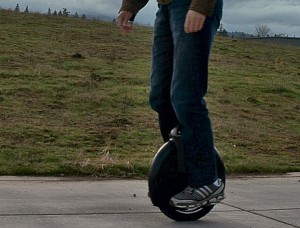

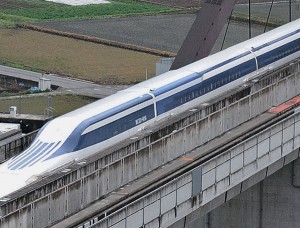
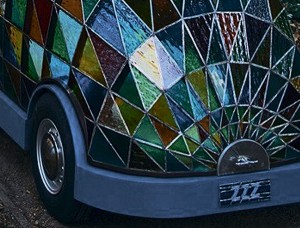
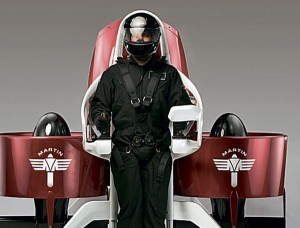
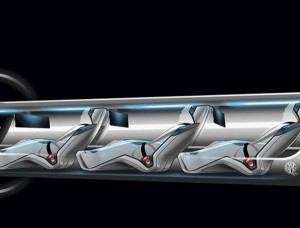
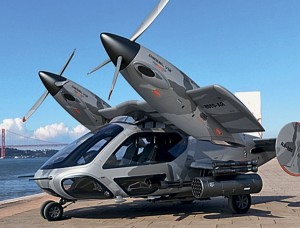
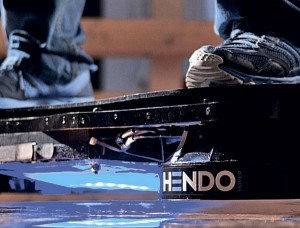
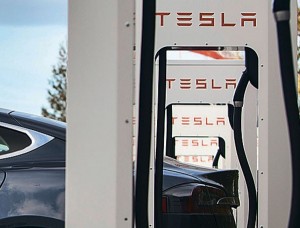
Leave a comment